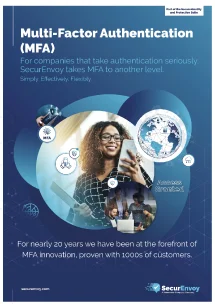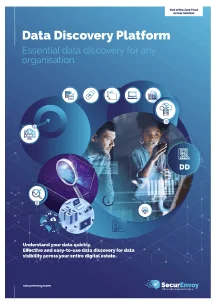

5 reasons why organisations need data discovery tools
- Increasing cybercriminals and insider threats resulting in data breaches.
- Sensitive data needs to be monitored to fulfil any DSARs and avoid fines.
- To meet compliance standards and regulations.
- To avoid financial and reputational damage.
What is data discovery?
Data discovery tools enable organisations to understand the sensitive data they have and provide visibility on where it resides across the digital estate. This replaces the need for time-consuming manual data searches. This is the first step in determining which data protection policies are best suited to the organisation’s needs.Discover data on-premise, in the cloud, on endpoints, servers and network file shares using data discovery tools. Data can also be discovered within structured and unstructured data in Microsoft 365, Google Workspace, Atlassian, Alfresco, etc. Data discovery tools enable automatic scanning for data at rest which can provide an understanding of the data risk profile. Data needs to first be discovered and understood, followed by classification and finally, policies can be set for the different data types to either protect or remove the data.Data discovery is the first stage in a larger data protection project. Organisations need to first understand what sensitive data it holds and where it resides before creating a plan to protect this data. Once organisations have visibility and understanding of the data it holds, the next stage is classifying the data into various categories including confidential, regulatory (GDPR, PCI, etc.) or public, after which a data classification policy can be created.Top 5 reasons to consider data discovery tools:
- To understand whether an organisation’s current and future data meets data governance and regulatory compliance requirements – all data needs to first be discovered.
Data discovery tools help provide:
- Visibility – Enabling you to understand the value of your data
- Classification labels and tagging
- Storage management and digital transformation – for example, data can be consolidated, deleted or moved to the cloud.
- Cost reduction
- Audit and reporting for regulatory compliance – including GDPR, CCPA, HIPPA, SOX, PCI-DSS, etc.
- To gain visibility of data on-premise and in the cloud. Data discovery tools provide visibility of data across the entire digital estate.
- To handle DSARs. With the rise in data subject access requests (DSARs), smaller organisations will be greatly impacted. These can be time-consuming, resource heavy and expensive for smaller organisations as these requests need to be responded to within 30 days to comply with UK GDPR rules. If an organisation holds large amounts of data across multiple databases, collaboration software, file servers and cloud storage, data discovery tools are the most cost-effective and efficient way to respond to DSARs. The personal data held can then be forwarded to the requester or even deleted as part of right-to-be-forgotten requests.
- To analyse data at rest. With data discovery tools, organisations can protect and understand data at rest both on-premise or in the cloud.
- To quickly understand the risk profile. Understanding an organisation’s current risk profile including where sensitive and confidential information resides can be achieved quickly and easily with data discovery tools. Data discovery tools can be launched in minutes to locate and extract data prior to cloud migration, respond to DSARs and meet regulatory compliance standards. Data discovery tools can be set up in around 30 minutes, a few endpoints can be scanned in minutes and scanning Atlassian and Microsoft Office 365 can be completed in under 2 hours.
Published: 6 marzo 2023
Category: Industry News, Industry Research
Data Classification / Data Discovery / Data Security Awareness / Data Visibility
![]()
Data Discovery
Platform
(DD)
Data discovery across your digital estate.
Essential data discovery for any organisation.
Learn more about SecurEnvoy DD
Hear more from
our security
experts






